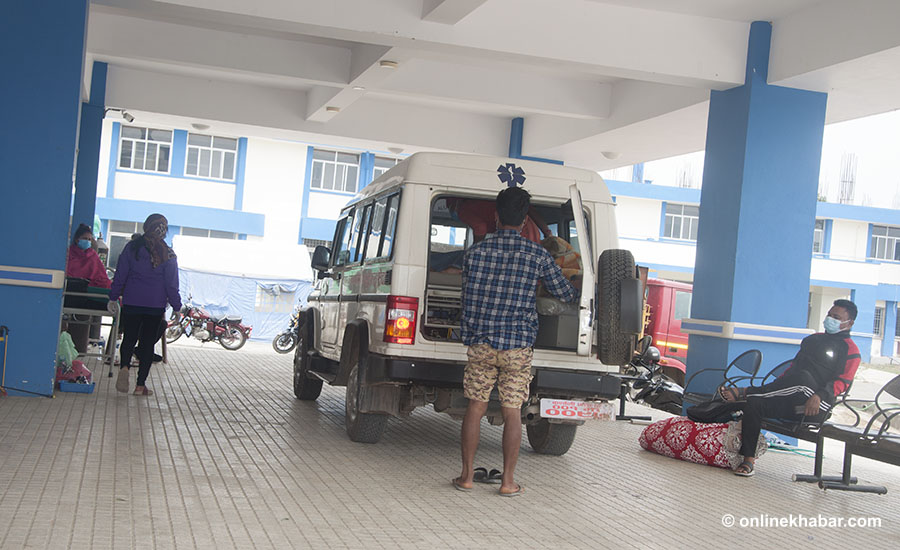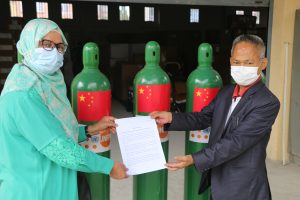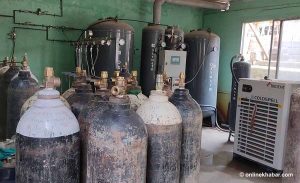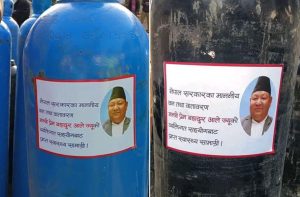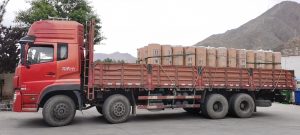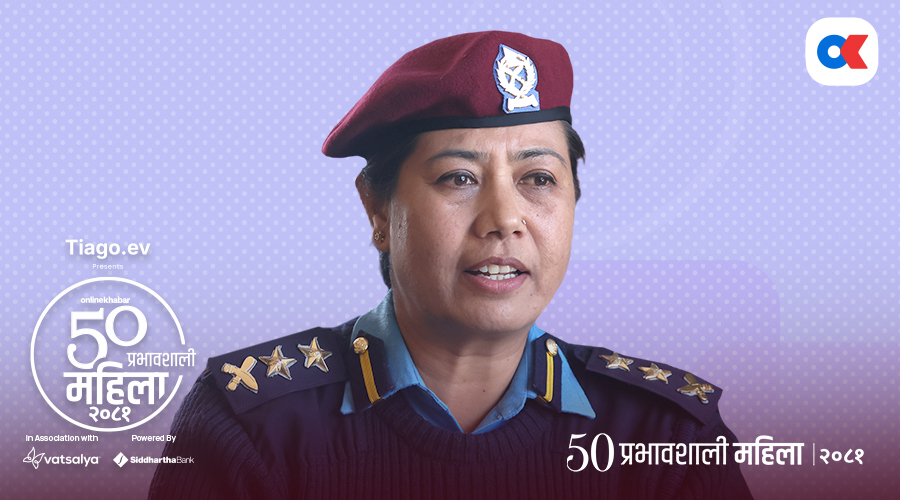An ambulance swerved away after leaving a young man outside the Covid-19 ward of Karnali Provincial Hospital in Surkhet on Friday afternoon.
The youth was a resident of Padampur in Birendranagar municipality-10 of the district. He was in home isolation and was taken to the hospital after he started experiencing respiratory problems.
“The ward is full inside; they are emptying it. Please, stay here for a while,” said a health worker urging him to wait on the verandah.

About 40 minutes later, another health worker came and checked him, saying, “The condition is critical; he needs oxygen immediately.”
Meanwhile, his relative, who had been making rounds of calls for oxygen for half an hour, was growing more worried. “I have called 50 places so far, but there is no oxygen,” he complained.
Two hours later, he finally got the oxygen cylinder and admitted the young man in the hospital.
***
Another 41-year-old man from Lekbesi municipality-1 of Surkhet was admitted to the Covid-19 ward of the hospital only a week ago.
Unfortunately, he could not overcome coronavirus and hence died on Friday afternoon after suffering from the lack of oxygen. “If he would have gotten the ICU and ventilator on time, he would have survived,” says his wife.

***
With the increased demand for oxygen given the increasing number of Covid-19 cases, the Karnali Provincial Hospital is having a hard time managing the treatment of its patients. The woe increased for the hospital as it is also treating referrals from other districts as well.
Some infected have also reached Karnali Institute of Health Sciences, Jumla. Public health experts say that the health crisis in Karnali will become more complicated as the number of infected people is increasing.
Lack of cylinders
According to the hospital’s Covid-19 focal person, Dr KN Paudel, patients other than those with Covid-19 need more than 200 oxygen cylinders daily. And, at present, 60 to 65 cylinders come daily from Nepalgunj.
Meanwhile, there are about 90 people infected with Covid-19, all in critical condition and in need of oxygen supply.
If there was a regular stock of 300 cylinders, there would not be chaos, says Paudel. “Demand is more than double the supply. Suppliers sometimes take time to deliver oxygen cylinders on time.”

In Karnali, there is a shortage not only of oxygen but also of cylinders required to fill the oxygen from the plant and take it to the patients’ beds.
Currently, the hospital has 120 cylinders of its own. An additional 100 cylinders are being provided by suppliers, but it is nowhere close to the demand.
Considering the shortage, the Karnali Provincial Hospital has decided to purchase an additional 500 cylinders. However, the hospital’s medical recorder Binod Basnet says that the officials are unable to buy new ones because there is a lack of cylinders in the market.
Meanwhile, Jay BC of Pawan Putra Suppliers Company claims that there is no shortage of oxygen despite some problems in the distribution system. “It is not a problem with oxygen production, but the number of cylinders in the market. Some cylinders are being hoarded while new cylinders cannot be obtained. If we can, it will be easier to manage the supply.”
The director of Provincial Health Service Directorate, Dr Rabin Khadka, says that there must be 1,000 oxygen cylinders available including those in government hospitals and private hospitals across the province.
Lack of oxygen in private hospitals
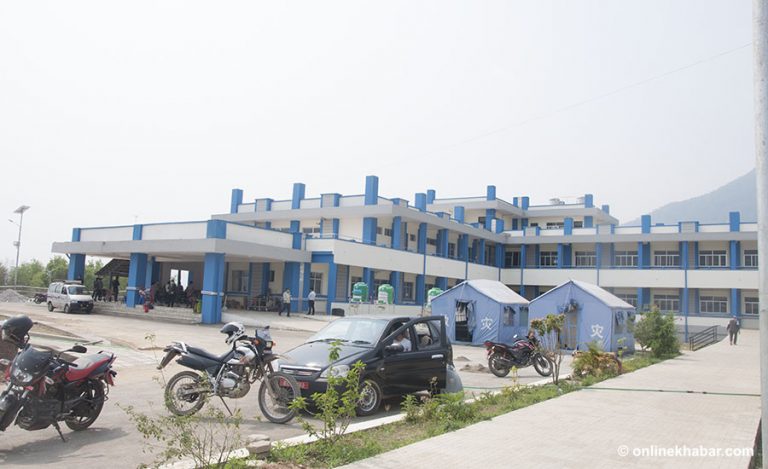
Lately, there is an oxygen crisis at private hospitals of the province too. The manager of Karnali Care Hospital, Deepak Gautam, says when there is a problem in oxygen supply, the treatment of critically ill patients gets difficult.
Karnali currently has to bring oxygen cylinders from another province. Ramu Khadka, the director of HO Oxygen Industries Pvt Ltd of Nepalgunj, says that there is a daily demand for 300 cylinders in Surkhet alone. However, at present, only 60 to 65 cylinders are being supplied.
Khaka also claims his plant produces 1,000 cylinders of oxygen daily, which it is only supplying to the provincial hospital only.
Bimala KC, the spokesperson of the Karnali provincial government, says the government has already sent the required budget of Rs 5 to 6 million to the concerned hospitals to better manage the crisis and operate oxygen plants. “We have also suggested the hospitals manage the oxygen by purchasing them through a fast track.”

Five of hospitals are already preparing for the process of construction of oxygen plants. Meanwhile, hospitals in Jajarkot, Surkhet, Dailekh and Mugu has expedited the process.
Oxygen plants are the solution
According to Dambar Khadka, the director of the Provincial Hospital in Surkhet, informs the facility has started preparations to provide oxygen to 100 beds. It is in the final stage of getting the oxygen plant in operation and laying the pipeline to connect to the beds.
After its completion, the treatment of Covid-19 patients will become easier, Khadka says, adding, “The new oxygen plant will be able to provide oxygen to 100 people and the old one to 20 people.”
The hospital also informs that Nepalgunj will continue oxygen supply to maintain the demand for treating patients infected with the coronavirus and others.
On the other hand, after the death rate started increasing, the Karnali government has also been active to manage the oxygen supply. In the initiative of Chief Minister Mahendra Bahadur Shahi, a new oxygen plant has been set up at the Provincial Hospital.
Last Monday, after monitoring the oxygen plant, Shahi claimed that there was no problem with the plant. “No one will die from the lack of oxygen now,” he said.
However, on Friday, the citizens were still seen scrambling to find oxygen cylinders for hours.



